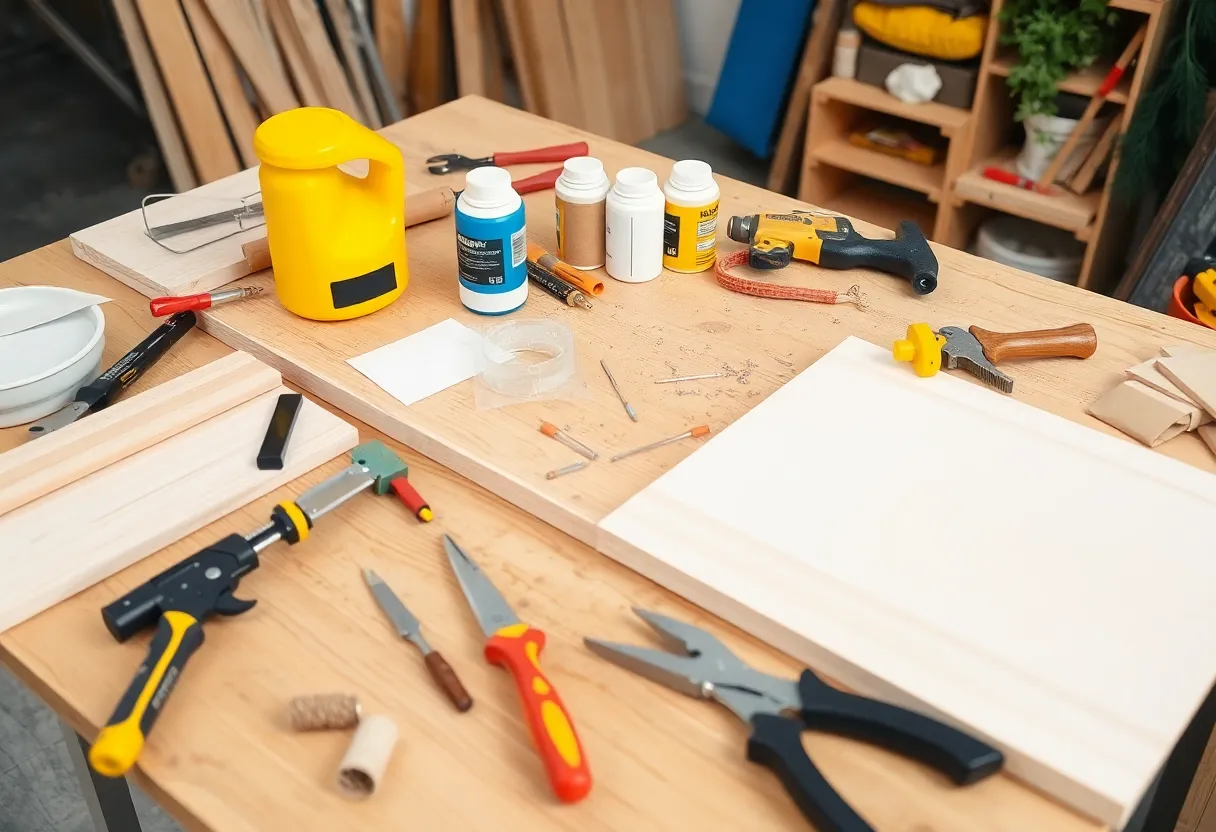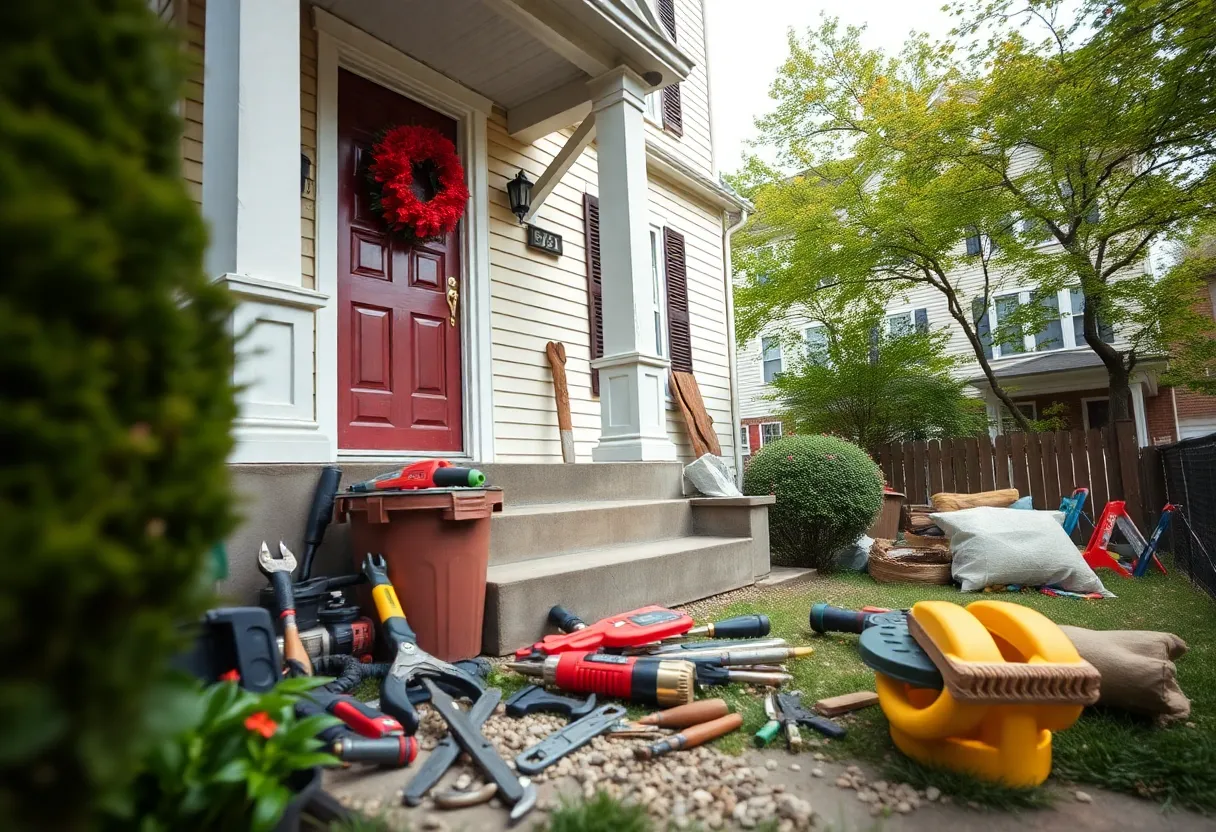How to Choose the Best Home Repair Techniques for Every DIY Project
Embarking on DIY home repairs offers both a practical and rewarding experience. However, selecting the appropriate repair techniques is vital to ensure safety, efficiency, and a high-quality finish. In this comprehensive guide, we explore essential considerations to help you confidently determine the most effective methods for any project.
Understanding the Nature of Your Home Repair Project
Assessing the Scope and Complexity
The first step involves accurately evaluating the project’s scope. Is it a minor fix, such as patching a small drywall hole, or a major renovation, like replacing a roof? The complexity directly influences the choice of repair techniques. Simpler tasks generally require basic tools and methods, while complex repairs may demand specialized skills and advanced techniques.
Identifying Material and Structural Factors
Analyze the materials involved. Different surfaces—wood, drywall, brick, or concrete—call for distinct techniques. Structural repairs, like foundation stabilization, often require precise, technical approaches; cosmetic fixes, such as repainting, allow more flexibility.
Prioritizing Safety and Compliance
Safety First in Method Selection
Choose techniques that prioritize safety. For example, when working with electrical systems, always turn off the power and use insulated tools. Avoid shortcuts that compromise safety standards. Always adhere to local building codes and safety regulations, especially for structural or hazardous repairs.
Understanding Regulatory Requirements
Some repairs require permits or inspections. Before choosing a technique, verify whether your project falls under such regulations. This ensures legal compliance and promotes long-term durability.
Matching Techniques to Your Skill Level
Assessing Personal Capabilities
Be honest about your skill level. Advanced techniques demand experience, such as roofing or foundation work. For less experienced DIY enthusiasts, opt for simpler, proven methods or consider professional assistance for complex tasks.
Seeking Knowledge and Training
Utilize instructional resources—video tutorials, workshops, or manuals—to learn proper techniques. Sound knowledge reduces errors, enhances safety, and leads to better results.
Evaluating Available Tools and Materials
Matching Technique with Tools
The correct technique often depends on the availability of appropriate tools. For example, sanding a wood surface efficiently requires a quality sander. Using inadequate tools can compromise the integrity of the repair and prolong the project.
Selecting the Right Materials
High-quality materials improve durability. When choosing repair methods, select compatible materials—such as matching wood types or sealants—to ensure proper adhesion and longevity.
Considering Durability and Long-Term Results
Forecasting Future Performance
Opt for techniques that provide lasting solutions, especially for structural components. For example, patching with quick-drying filler may suffice temporarily, but permanent repairs demand proper sealing and stabilization methods.
Assessing Environmental and Usage Conditions
Consider exposure factors such as moisture, temperature fluctuations, or foot traffic. Techniques that suit these conditions will extend the lifespan of the repair.
Weighing Cost-Effectiveness
Budget-Friendly Options
Balance cost with quality. Some techniques may be more economical but less durable. For critical repairs, investing in premium materials and advanced methods can prevent future expenses.
Analyzing Time Investment
Efficient techniques save time without sacrificing quality. For instance, using a paint sprayer rather than brushes can speed up painting projects considerably.
Selecting Appropriate Repair Techniques for Common Projects
Drywall Repair
For small holes, the taping and spackle method is effective. Larger damages may require patching with drywall sheets and precise blending. Use joint compound and sanding techniques for a seamless finish.
Painting and Finishing
Proper surface preparation is crucial. Techniques include sanding, priming, and applying multiple coats. For high-quality results, use appropriate brushes, rollers, or sprayers based on surface type and size.
Roof Repairs
Repairing asphalt shingles involves patching or replacing damaged tiles using roofing cement or new shingles—techniques that ensure water tightness. For structural leaks, more sophisticated methods like flashing replacement may be required.
Plumbing Fixes
Simple leaks often benefit from tightening fittings or replacing washers. More involved tasks, like pipe replacement, require techniques like cutting, fitting, and sealing pipes properly to prevent future leaks.
Foundation and Structural Repairs
Critical repairs involve underpinning, wall stabilization, or crack injection. Such techniques demand precise application and often professional expertise to ensure safety and compliance.
Adapting Techniques to Specific Situations
Environmental Conditions
Weather significantly influences repair methods. For example, exterior painting should be performed in dry, moderate conditions. Moisture-resistant techniques suit damp environments.
Time Constraints and Deadlines
Urgent repairs may require expedited methods. An example is using quick-setting compounds or fast-drying primer to speed up the process without sacrificing quality.
Aesthetic Goals
Visible repairs, such as wall patches, demand techniques that achieve a smooth, imperceptible finish. This could include multiple sanding stages or specialized filler compounds.
Leveraging Professional Advice and Resources
Consulting Expert Opinion
When in doubt, professional consultation can prevent costly mistakes. Skilled contractors can recommend the most suitable techniques considering structural integrity and longevity.
Utilizing Reliable Resources
Refer to manufacturer instructions, industry standards, and reputable DIY guides. Accurate information anchors safe and effective method selection.
Conclusion
Choosing the right home repair techniques is foundational to successful DIY projects. Understand the unique demands of each task. Prioritize safety, select methods compatible with your skill set, and consider environmental factors. Use quality tools and materials to enhance durability. Always aim for solutions that balance cost, time, and long-term performance. Accurately matching your project to the most appropriate repairs fosters results that stand the test of time. In complex cases, seeking professional guidance ensures repairs are safe, compliant, and lasting.
By applying these principles, you enhance your ability to tackle varied home repairs confidently and effectively. Proper technique selection not only improves the immediate outcome but also preserves your home’s value and safety over time.
Author: STAFF HERE BALTIMORE WRITER
The BALTIMORE STAFF WRITER represents the experienced team at HEREBaltimore.com, your go-to source for actionable local news and information in Baltimore, Baltimore County, and beyond. Specializing in "news you can use," we cover essential topics like product reviews for personal and business needs, local business directories, politics, real estate trends, neighborhood insights, and state news affecting the area—with deep expertise drawn from years of dedicated reporting and strong community input, including local press releases and business updates. We deliver top reporting on high-value events such as the Baltimore Book Festival, Preakness Stakes, and Artscape. Our coverage extends to key organizations like the Baltimore Chamber of Commerce and Visit Baltimore, plus leading businesses in shipping and healthcare that power the local economy such as the Port of Baltimore and Johns Hopkins Medicine. As part of the broader HERE network, we provide comprehensive, credible insights into Maryland's dynamic landscape.





